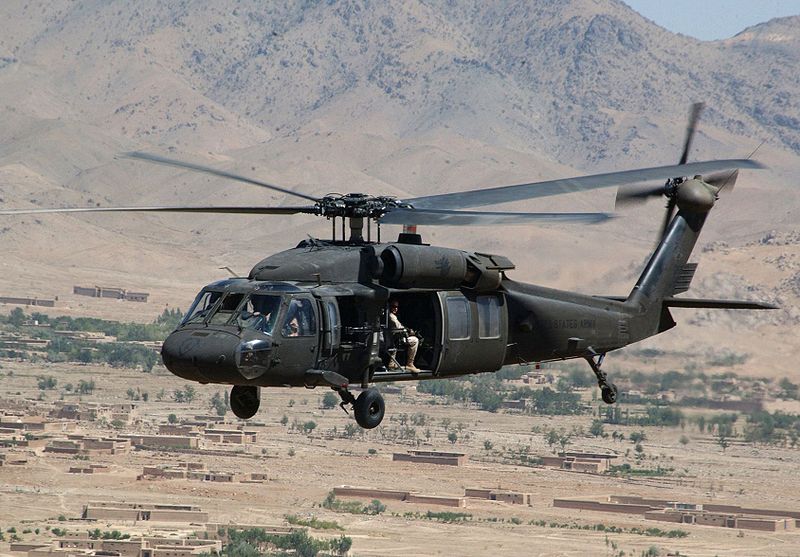The UH-60A Black Hawk is the primary division-level transport helicopter, providing improvements in troop capacity and cargo lift capability compared to the UH-1 Series "Huey" it replaces. The UH-60A, with a crew of three, can lift a grown man of 11 fully equipped infantry squad in most weather conditions. It can be configured to carry four litters, by removing eight troop seats in the role Medeval. Both the pilot and copilot are provided with a protective armor against the seats. Armor protection in the Black Hawk can withstand hits from rounds of 23 mm.
The Black Hawk has a cargo hook for external lift missions. The Black Hawk has provisions for door mounting two guns M60D machine 7. 62mm on the M144 armament subsystem, and can disperse chaff and infrared flare dispenser interference with general-purpose M130. The Black Hawk has a composite titanium and fiberglass four-bladed main rotor is powered by two General Electric T700-GE-700 1622 shp turboshaft engines and has a speed of 163 mph (142 knots).
The UH-60 first flew in October 1974, was developed as a result of system utility tactical transport aircraft (UTTAS) program. The UTTAS was designed for troop transport, command and control, medical evacuation, and reconnaissance, to replace the UH-1 Series "Huey" in the combat assault role. In August 1972, the U.S. Army selected the Sikorsky (model S-70) YUH-60A Boeing Vertol and (model 237) YUH-61A (1974) as competitors in the UTTAS program. The Boeing Vertol YUH-61A had a four-bladed composite rotor, was powered by the same General Electric T700 engine as the Sikorsky YUH-60A, and could carry 11 soldiers. In December 1976 Sikorsky won the competition to produce the UH-60A, later called the Black Hawk.
The Black Hawk has a cargo hook for external lift missions. The Black Hawk has provisions for door mounting two guns M60D machine 7. 62mm on the M144 armament subsystem, and can disperse chaff and infrared flare dispenser interference with general-purpose M130. The Black Hawk has a composite titanium and fiberglass four-bladed main rotor is powered by two General Electric T700-GE-700 1622 shp turboshaft engines and has a speed of 163 mph (142 knots).
The UH-60 first flew in October 1974, was developed as a result of system utility tactical transport aircraft (UTTAS) program. The UTTAS was designed for troop transport, command and control, medical evacuation, and reconnaissance, to replace the UH-1 Series "Huey" in the combat assault role. In August 1972, the U.S. Army selected the Sikorsky (model S-70) YUH-60A Boeing Vertol and (model 237) YUH-61A (1974) as competitors in the UTTAS program. The Boeing Vertol YUH-61A had a four-bladed composite rotor, was powered by the same General Electric T700 engine as the Sikorsky YUH-60A, and could carry 11 soldiers. In December 1976 Sikorsky won the competition to produce the UH-60A, later called the Black Hawk.











